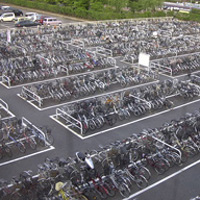Soft Mobility and Urban Transformation: Some European Case Studies
Abstract
The paper examines some European cases referred to promotion of soft mobility as a new lifestyle oriented to improve benefits on environment and urban liveability. Soft mobility refers to human powered displacement (HPM) and represents a particular component of passenger traffic, it is particularly associated with pedestrian traffic, hiking, cycling as well as getting around on vehicle-type devices (such as inline skates, kick scooters, etc.). Promoting this kind of sustainable transport needs interventions both on physical and functional system. On one hand cities have to provide specific attractive, safe and integrated facilities whose realization could be an opportunity of urban requalification; on the other hand they have to dispose political actions to improve soft mobility use. European context is characterized by high disparity among countries in the use of soft mobility applied to urban displacement in spite of a prolific production of laws and roles referred to the emergency of adopting new ways of moving to minimize negatives impacts generated by car dependence also in urban short distance. The use of soft mobility for short displacement especially referred to leisure and tourism activities could represent an occasion both to promote special measures to create better condition in urban life and to improve integration between territorial transformation and mobility management achieving higher level of urban quality life. The cases shown in this paper underline that promotion of soft mobility affect both territorial and urban level giving a chance toward new ways of enjoying urban and territorial resources.Downloads

Copyright (c) 2014 Tema. Journal of Land Use, Mobility and Environment

This work is licensed under a Creative Commons Attribution 4.0 International License.
Authors who publish in this journal agree to the following:
1. Authors retain the rights to their work and give in to the journal the right of first publication of the work simultaneously licensed under a Creative Commons License - Attribution that allows others to share the work indicating the authorship and the initial publication in this journal.
2. Authors can adhere to other agreements of non-exclusive license for the distribution of the published version of the work (ex. To deposit it in an institutional repository or to publish it in a monography), provided to indicate that the document was first published in this journal.
3. Authors can distribute their work online (ex. In institutional repositories or in their website) prior to and during the submission process, as it can lead to productive exchanges and it can increase the quotations of the published work (See The Effect of Open Access)
